15: Perforated Cards, Metal finish and Other Oddities
There are some unusual designs in playing cards, even the shape of the card.
The Victorians were very inventive and often went to great lengths to solve what they saw as practical problems. One of the less successful of these applied to playing cards. In 1851 Joseph Reynolds was granted a patent for newly-shaped cards to aid handling. The details of the patent are reproduced in Mike Goodall's booklet on Reynolds (dealt with alongside Bancks) and there are two diagrams showing the new shapes. One is waisted at the sides to enable better handling and the corners are rounded. They were being advertised (and presumably sold) certainly from 1859-63, but I have never seen an actual example. But I have got a pack of the perforated ones, so I illustrate them below, and the sample card says their are called 'Pearl Edge' cards, at a wholesale price of 29/6 per dozen packs.
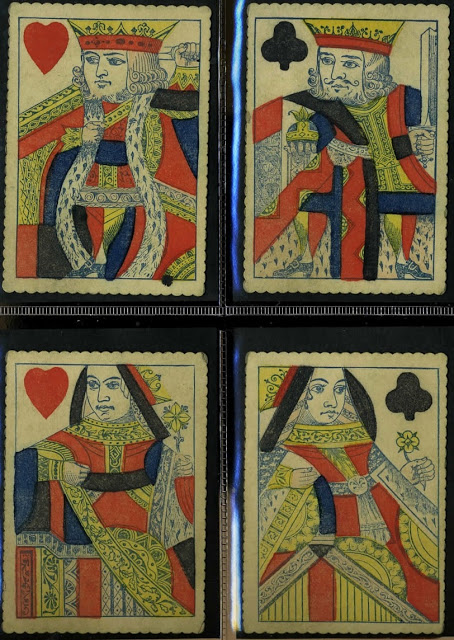
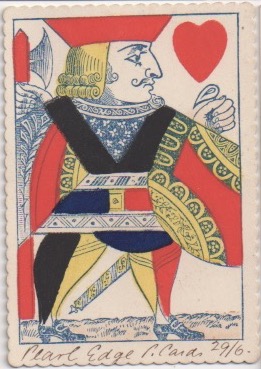
Interestingly, much more recently Gemaco, an American firm, had another go at making cards to fit more easily into the hand in a way reminiscent of Reynolds' version, though the sides are straight.
 Gemaco's New Deal
Gemaco's New Deal
Yet another oddity is furnished by De La Rue from c.1900 in a perfectly normal box. Why anyone should want to use Roman numerals I can't imagine. The cards may have been devised for those with poor sight.
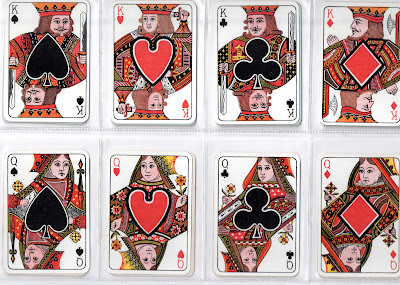
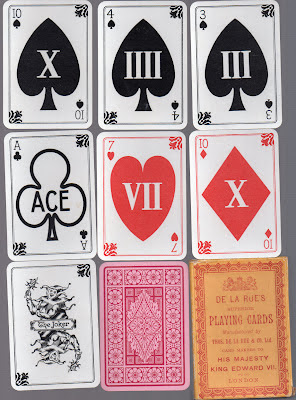
De La Rue were clearly concerned with cards for the poorly sighted; back in 1851 they introduced their Optik cards (though I don't know what they looked like), but around 1900 Optik was still available. The courts are D6 with added blue-grey, which also appears on the AS, and the pack has different coloured suits. The lower courts were also used in ordinary packs on rare occasions.
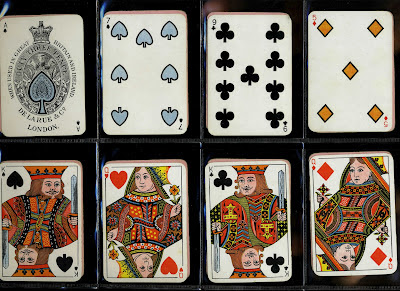
De La Rue Optik
Unusual courts, ASs and jokers of small makers such as Liverpool Daily Post, Breedon, and Berkshire Printing Co, Reading, date from between the two world wars.

Daily Post, Liverpool, c.1925

Breedon, Nottinghamshire, c.1958?
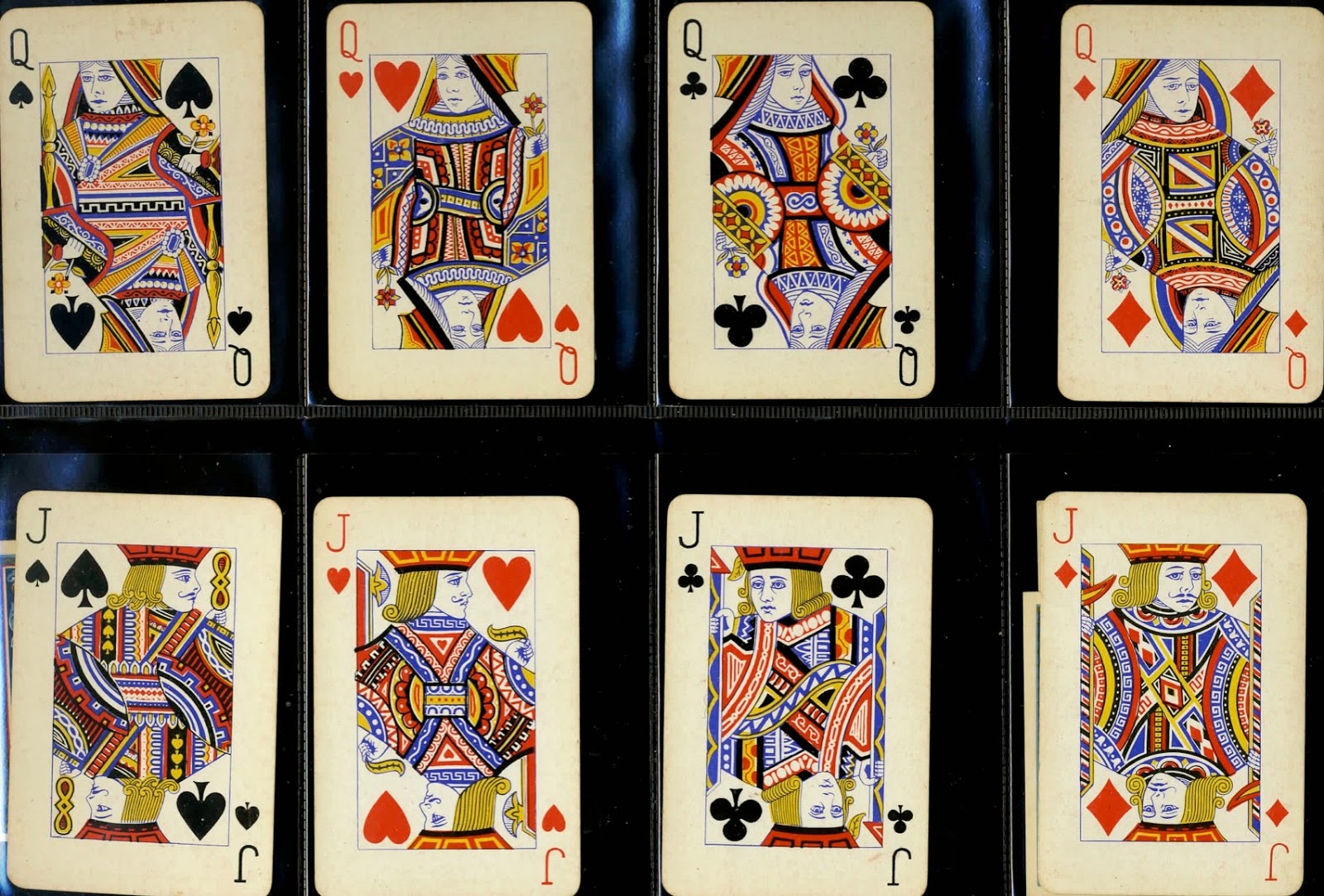
Berkshire Printing Co., c.1930

Liverpool Daily Post (top left), Breedon, Nottinghamshire (top right) and Berkshire Printing Co, Reading (bottom)
Humphreys in the USA in c.1816 produced some unusual courts for the time with what looks like an engraved outline rather than a wood-block one.

Has anyone seen anything like the pack illustrated below? It has an anonymous Old Frizzle and is a very poorly executed copy of a Creswick pack (Type IV). The suit signs of the pip cards, which are printed, are not the same as those on the courts, which are stencilled, but this happens in better productions such as those of Goodall. The courts look as though they are hand-drawn, but are not; I suspect some kind of early printing process based on letterpress.
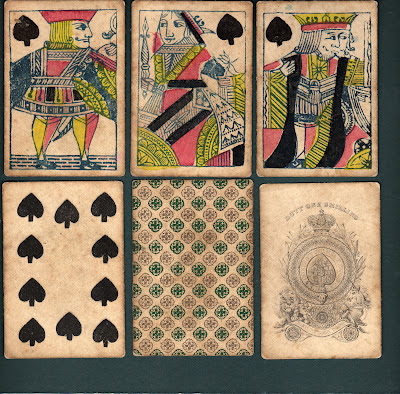

The late Laurence Alt used to say that the unassigned Frizzles were allocated to Woolley & Sabine, but this is only part of the story. I have a Creswick pack with an anonymous Old Frizzle; it has courts from the same set of blocks as in another named Creswick pack. Later on still Whittaker, and maybe other makers, had anonymous Old Frizzles and export aces. As a guess, I would say it's from the last throes of Creswick (1840s), but in fact it could be by almost any one of the small makers of the 1840s & 50s. Has anyone any other ideas?
And here's another twist: there's a double-ended version! This pack has no AS, but all the corners have been cut off, so that the pack could be sold as waste without tax, but it could still be used with a home-made AS. The cards are very poorly produced with more stencilling than the single-ended version, and the stencilling of the number cards is very sloppy (look at the two spade cards). Even the back design is poorly printed. The double-ending has been achieved by cutting the original blocks/plates in half and printing the head twice; this is a common practice in European cards, but not so common in England, where the design was usually redrawn to tie the double-ended figures together. (See pages 1 and 33 for more examples of double-ending.)
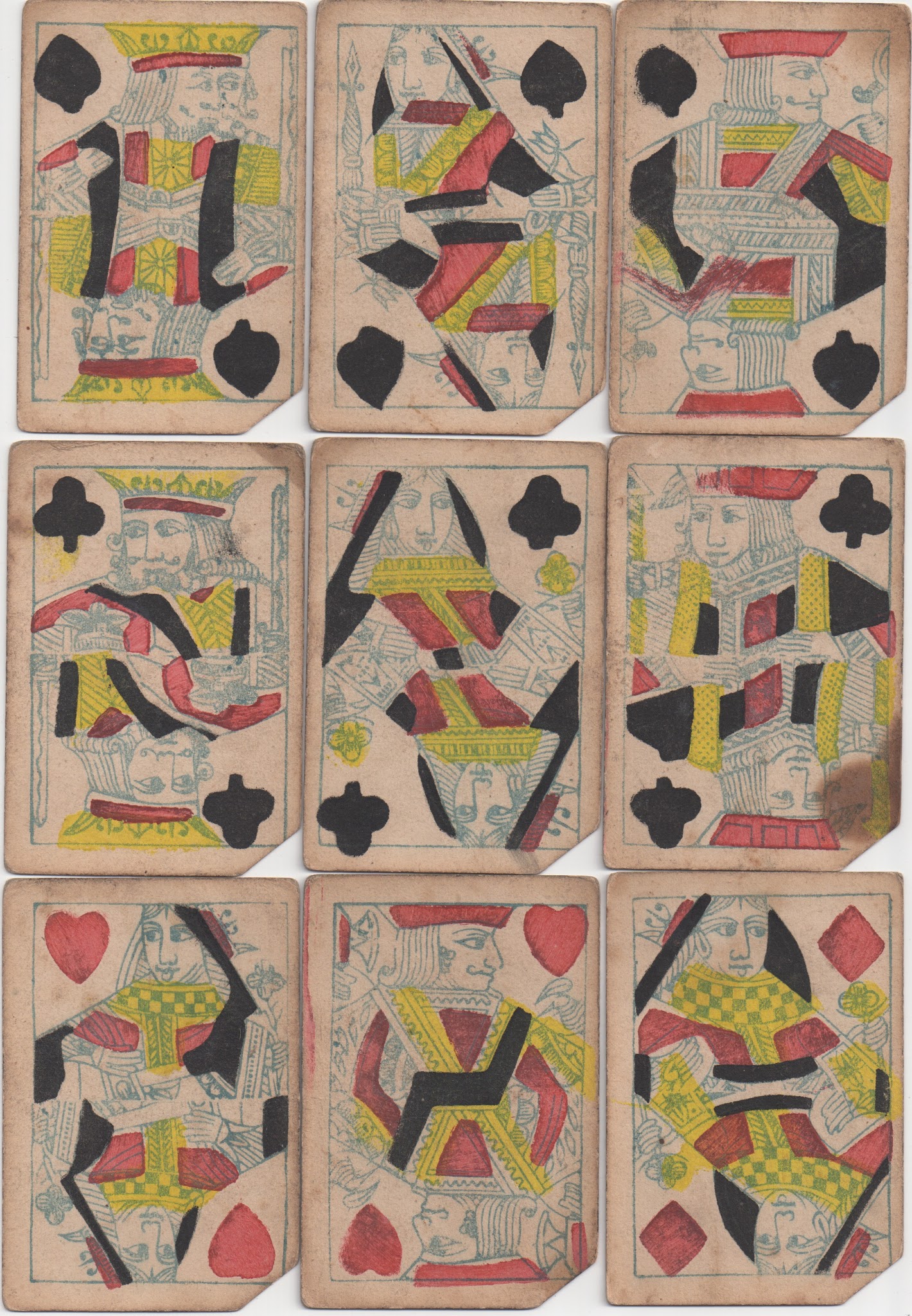

And yet another twist! An anonymous pack with the same number cards as the single-figure pack above, but different courts. They are of Type III and seem to be from the blocks of an identifiable pack by Woolley & Sabine. So, who knows how to interpret all this?!
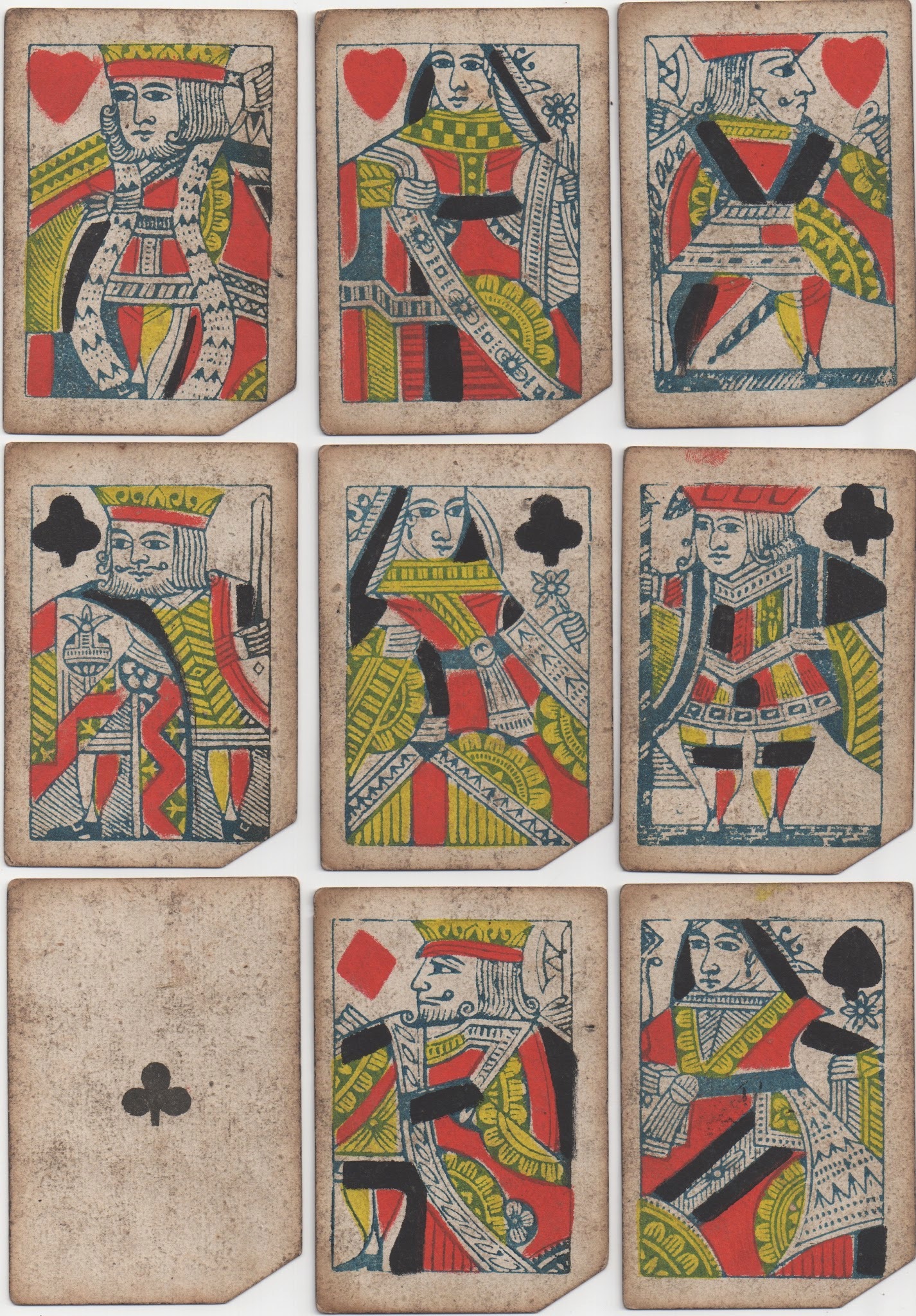
A transparent pack by James English.
This is a pack I'd seen several years ago with no box. I knew it was by James English from the plates of the courts, but I didn't know the cards were transparent. But this acquisition has posed more questions than it has answered! That the courts are printed in one colour only (all red or all black depending on the suit) is enough to interest me. They also have indices inside the frame line, like a full-colour pack I have. On the other hand, the number cards do not have any indices, but they are double-ended. The backs are plain white, the cards themselves are slightly smaller than the usual wide cards of the period, and the production quality is poor. The AS is a simple, anonymous spade.
Then there's the Houdin connection. They were makers (or publishers) of transparent cards in the 1880s and 1890s with what were then considered very outrageous hidden drawings of chorus girls with and without male accompaniment. You can make them out faintly on the illustrations of the number cards below. The ones I've seen referred to have standard French courts. Their name is printed on the box of these cards, but very oddly in the oval space of an English tax wrapper (not an import one, either), which is stuck round the sliding lid of the box. So, I'm not sure what to make of all that. The cards are certainly by James English and the concept of transparent cards goes with Houdin, but it's all a bit of an intriguing mystery.
For comparison I've added a few examples of normal James English courts.


After WWII Waddington produced a number of oddly shaped packs: Rondo, a renaming of the pre-war Cir-Q-Lar; Slimline, narrower than bridge width; Kon-Vex, barrel-shaped cards, and Zulu, shaped like a Zulu shield. None of these were very popular, though the convex cards were used in a number of advertising packs. See also page 17 ►

Kon-Vex, c.1952-58

Zulu, c.1955
Nowadays China produces all kinds of unusual shapes for cards: heart-shaped, elongated with rounded ends, snowman-shaped, ballet-shoe-shaped, and so on.
Different coloured backgrounds have been around for a long time, going back to the 1920s and 1930s with no-revoke packs such as Arpak. I've just come across a black pack with white or red suits and printing made in China for the Danish cheap store chain, Tiger. What's even more interesting is that three of the jacks have had their figures mixed up. And all for just £1!!
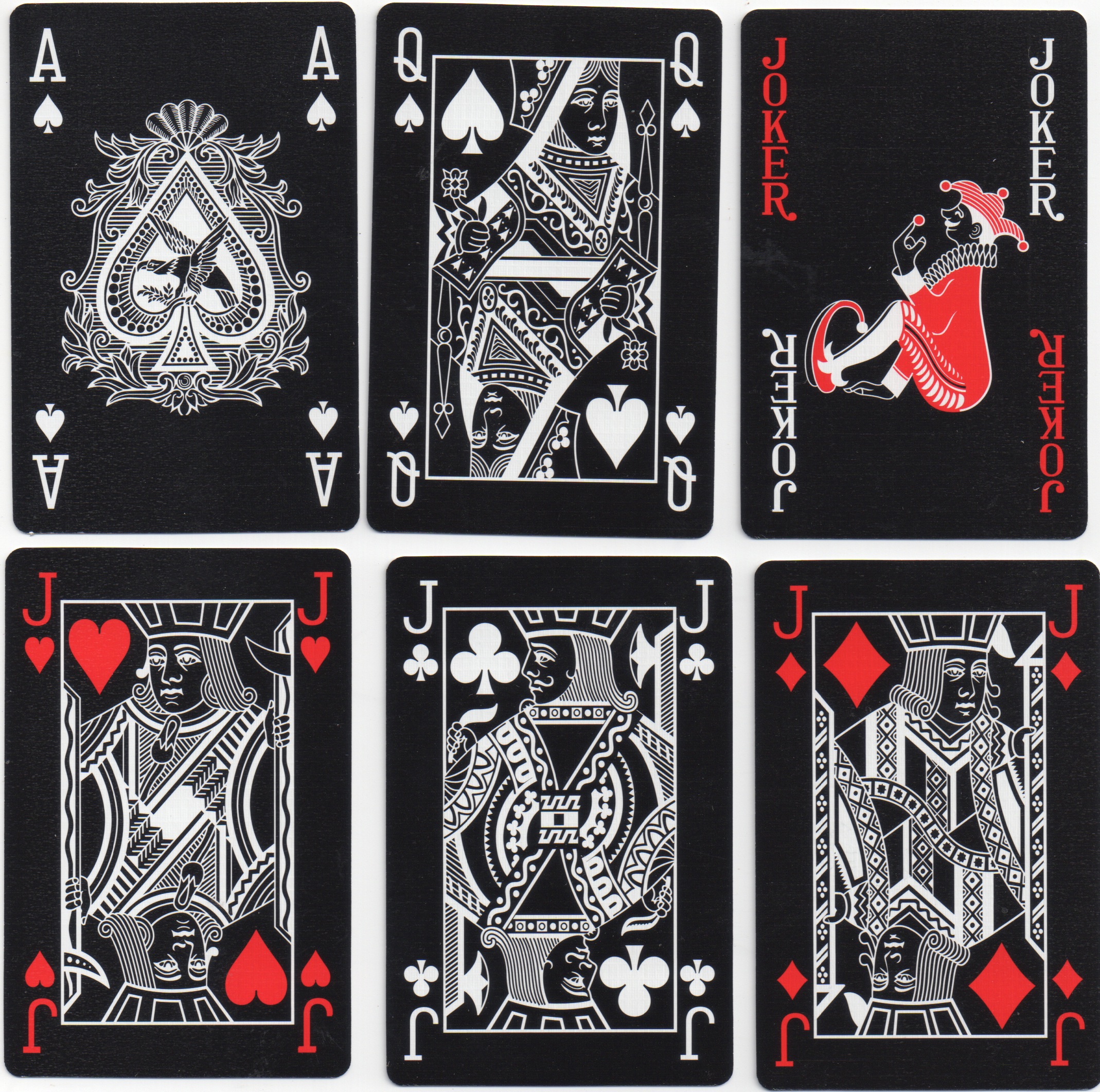
[= JD] [= JH] [= JC]
Metal finish
Black backgrounds are odd enough and I'm not sure why anyone would want to play with packs like the one above. Even less amenable to play are those made of metal or with metallic finishes. The first ones I know of are the aluminium cards made in America in 1901 for the Pan American Exposition and in 1904 another pack was made for the St. Louis World's Fair with images of the Fair on each card. In the 1930s Häusermann, an Austrian firm, also made a full-size and a patience pack of aluminium, using a copy of Goodall's standard courts.

Recently, several metallic finishes have been offered by various makers: if you google metal-finish playing cards, you'll find a number of images. Again, I can't see that card-players would want to use them. To me some of them feel decidedly odd to handle. Below are two examples of gold finish. The top one is from China, made for Greece with "I love Greece" on the backs; the box is finished in the same way and very difficult to open! The lower one is by Waddington with a back design included. The standard Waddington No.1 cards are made in Austria at the time of writing (2020), but these were made in China - it says so on the box.
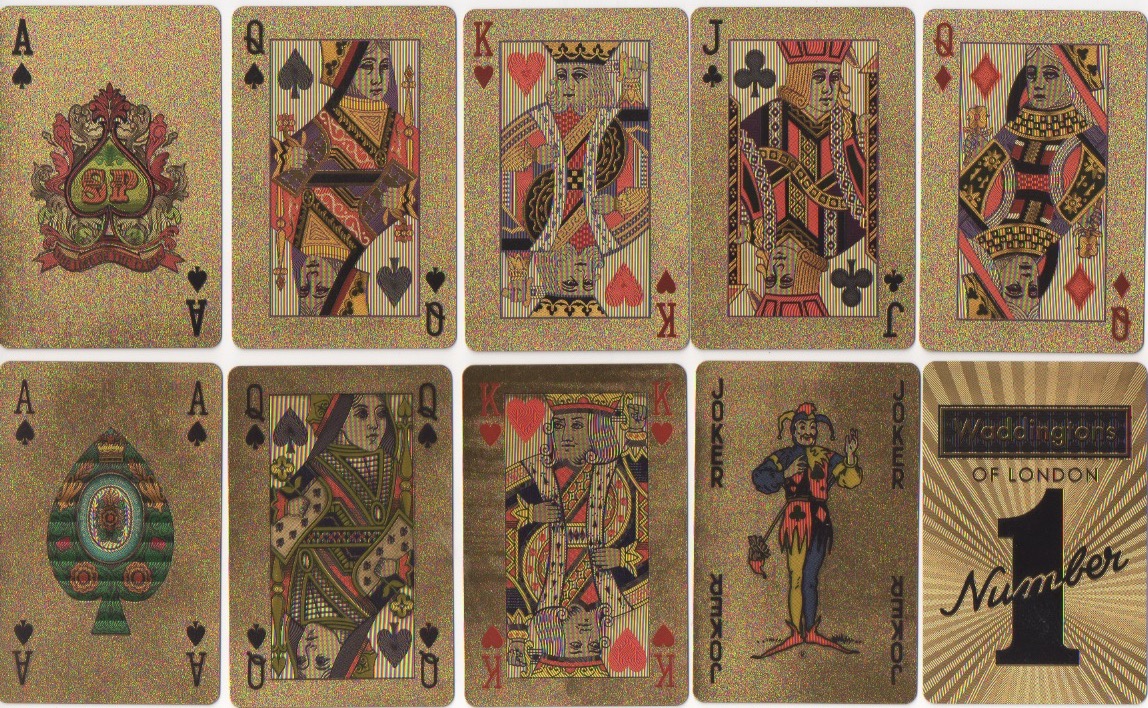
Very strange!!
By Ken Lodge
United Kingdom • Member since May 14, 2012 • Contact
I'm Ken Lodge and have been collecting playing cards since I was about eighteen months old (1945). I am also a trained academic, so I can observe and analyze reasonably well. I've applied these analytical techniques over a long period of time to the study of playing cards and have managed to assemble a large amount of information about them, especially those of the standard English pattern. About Ken Lodge →

Leave a Reply
Your Name
Just nowRelated Articles
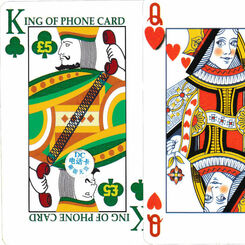
Phone and smart cards
Phonecards with playing card designs.

Marie and Laurent’s Wedding
Wedding invitation and thank you card in the form of playing cards. France, 2019.

Leather Card Case Patent Application
In 1932, a patent was granted to Colin Hart and George Franklin for a leather case in the form of a ...

Patience Cards and their Boxes
Patience Cards and their Boxes by Tony Hall.

69: My Collection
This is an archive list of my collection. I hope it will be of use and interest to others.
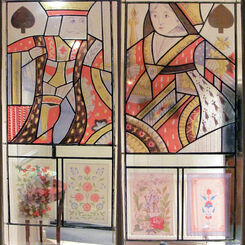
68: Playing cards in glass
My wife and I have recently commissioned a unique pair of stained glass windows for our home.
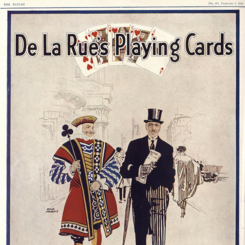
67: Adverts and related material after 1900
The final page of material relating to playing cards from British periodicals.

66: Adverts and related material 1862-1900
Some further material relating to cards from nineteenth and twentieth century periodicals.

A Look Back with Hope for the Future
“A Look Back with Hope for the Future” by Rod Starling
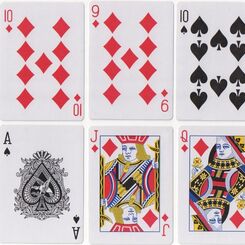
56: Number cards and Chinese Crackers
A brief look at the number cards used in standard English packs.

51: Some modern variations
A brief survey of some current variations in the standard English pattern.

49: De La Rue in detail
A detailed presentation of the variants of De La Rue's standard cards.

47: Welch’s postcards and De La Rue’s redrawing
There are a number of court card designs that have never actually been produced as cards. It's a sha...

41: A Guide to Dating Playing Cards
Dating is a particularly tricky but very interesting problem to tackle and there are many pitfalls. ...

39: Mixed Packs
A number of mixed packs appear for sale from time to time, but it's important to sort out what is me...
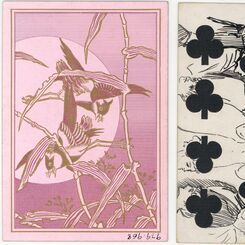
27: Cards at Strangers’ Hall, Norwich
There is a very interesting collection of playing cards held at the Strangers' Hall Museum in Norwic...

26: Playing Cards: Rarity, Value, Dating, Sellers and eBay
Notions like rarity and monetary value are slippery customers and need careful handling. And there a...

11: Some Cards from Sylvia Mann’s Collection
A fascinating collection that was the basis of a lot of research that we still benefit rom today.
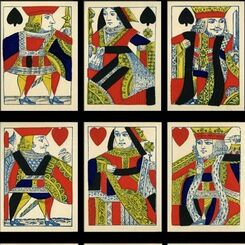
2: Still Collecting Playing Cards at 80
This is a personal account of some of my experiences collecting playing cards.
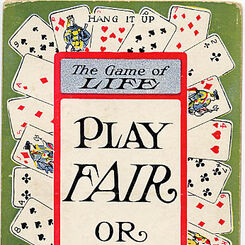
Playing Cards in other cards
Secondary applications of playing cards.
Most Popular
Our top articles from the past 60 days


 Your comment here. Your comment here. Your comment here. Your comment here. Your comment here. Your comment here. Your comment here. Your comment here. Your comment here. Your comment here. Your comment here. Your comment here. Your comment here. Your comment here. Your comment here. Your comment here. Your comment here. Your comment here. Your comment here. Your comment here. Your comment here. Your comment here. Your comment here. Your comment here. Your comment here. Your comment here. Your comment here. Your comment here. Your comment here. Your comment here. Your comment here. Your comment here.
Your comment here. Your comment here. Your comment here. Your comment here. Your comment here. Your comment here. Your comment here. Your comment here. Your comment here. Your comment here. Your comment here. Your comment here. Your comment here. Your comment here. Your comment here. Your comment here. Your comment here. Your comment here. Your comment here. Your comment here. Your comment here. Your comment here. Your comment here. Your comment here. Your comment here. Your comment here. Your comment here. Your comment here. Your comment here. Your comment here. Your comment here. Your comment here.




















